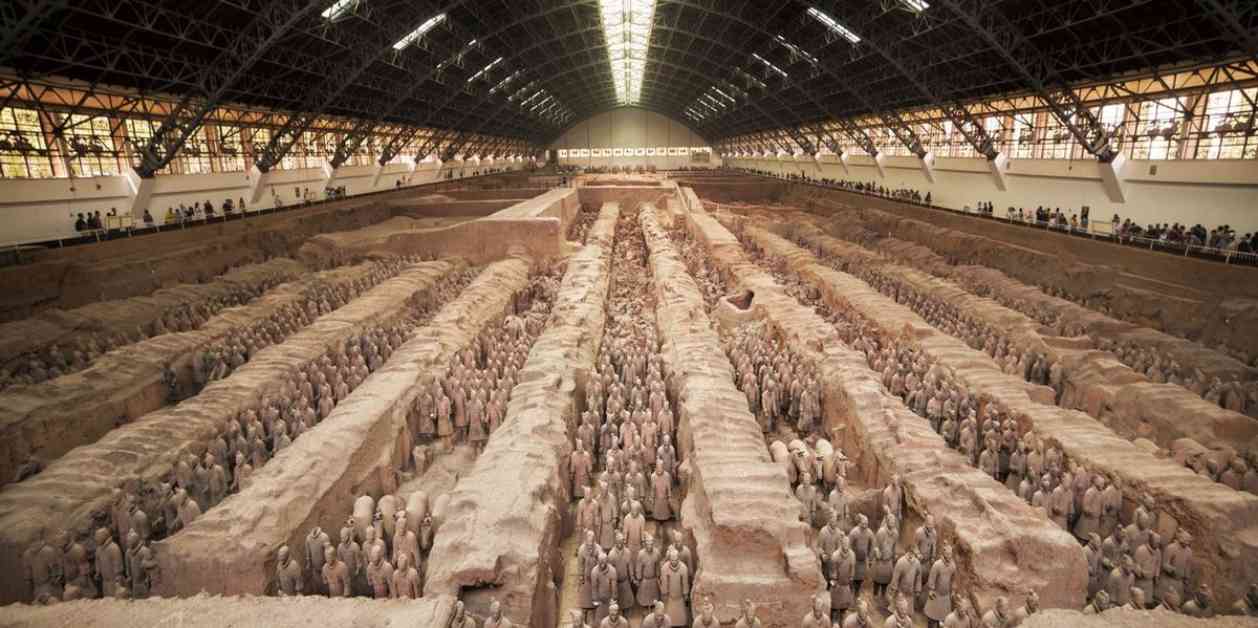The Mysterious Tomb of China’s First Emperor: A Treasure Trove or Trap?
The tomb of Qin Shi Huang, the first emperor of China, has long been shrouded in mystery and intrigue. Guarded by a terracotta army of soldiers and horses, the tomb was discovered by farmers in the Shaanxi province in 1974. Since then, archaeologists have been hesitant to open the tomb, fearing the potential dangers that lie within.
The Legends and Lore Surrounding the Tomb
According to writings by Chinese historian Sima Qian, the tomb of Qin Shi Huang is said to be filled with palaces, scenic towers, rare artifacts, and treasures beyond imagination. However, what has sparked fear among archaeologists are the rumors of deathly booby traps that were supposedly set to protect the tomb from intruders.
One of the most chilling accounts comes from Sima Qian himself, who wrote about crossbows and arrows primed to shoot at anyone who enters the tomb. Additionally, mercury was used to simulate rivers and seas within the tomb, with the potential to flow mechanically. These elaborate security measures have kept the tomb sealed for over two millennia, with the fear of triggering these traps still looming large.
The Dangers of Opening the Tomb
Despite the allure of uncovering the treasures within Qin Shi Huang’s tomb, archaeologists have been hesitant to proceed with any excavation efforts. The fear of causing irreparable damage to the artifacts and structures within the tomb, as well as the potential dangers posed by the alleged booby traps, have kept the tomb sealed shut.
In a 2020 paper, researchers expressed concerns about the volatility of liquid mercury within the tomb, which could pose a serious health risk if it were to seep through the cracks. While some have suggested using non-invasive techniques to explore the tomb, the risks involved in potentially triggering the traps or releasing toxic substances have made it a daunting task for archaeologists.
The Quest for Answers
Despite the challenges and dangers associated with opening Qin Shi Huang’s tomb, the allure of unraveling the mysteries of China’s first emperor continues to drive researchers and archaeologists. The potential insights into ancient Chinese history, culture, and technology that could be gained from exploring the tomb are too valuable to ignore.
While the risks are real and the consequences unknown, the quest for knowledge and understanding may ultimately push archaeologists to brave the dangers that lie within the tomb of Qin Shi Huang. Only time will tell if the secrets of China’s first emperor will finally be revealed, or if the tomb will remain sealed for eternity.













